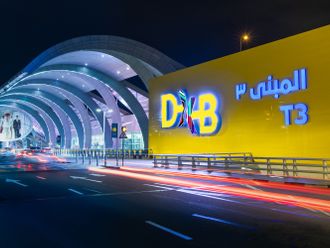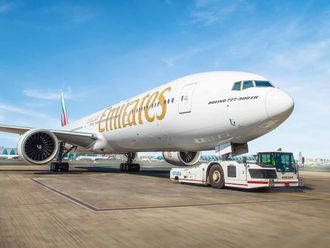Singapore: Aerospace firms will finalise billions of dollars of deals at this week’s Singapore Airshow, hoping to ride out a storm in emerging markets whose prosperity is vital to their plans to keep producing record numbers of jets.
Asia’s largest aerospace gathering is usually a “show and tell” event where executives come to mingle with some of the world’s biggest long-haul carriers and Asia’s ambitious new travel tycoons, as well as the region’s busy military buyers. After a record $200 billion of deals at last November’s Dubai Airshow, few expect Asian buyers to be ordering in similar quantities.
“Asia is a huge market but has been somewhat eclipsed by the Gulf, which has the same idea about how to pursue traffic and got to the orders race a few months before Singapore,” said aerospace analyst Richard Aboulafia, vice-president at Teal Group.
Vietnamese, Indian and Thai carriers will place orders for over 100 Airbus or Boeing passenger jets worth $12 billion at list prices, industry officials say. Malaysian Airlines could also place an order for Airbus long-haul and medium-haul jets.
Both Airbus and Boeing have committed to record production rates for their most popular models and have longer-term plans to produce more than 100 narrow-body jets a month between them — churning out a $100 million jet every few working hours. But executives will be looking out for any signs that financial turmoil in key aviation markets like Indonesia and Thailand will threaten economic growth, which directly determines the level of air traffic demand.
“The manufacturers might be getting ahead of themselves given the troubles in emerging markets,” said Aboulafia. “Many of these markets are in some form of currency crisis or economic downturn and the focus will be coming back to the Middle East and a hoped-for North American resurgence.”
The world’s no. 1 planemaker Boeing does not see its commercial jet business affected by weakness in emerging markets, chief executive Jim McNerney said this week. But he noted more divergence among such countries, and China and the Middle East remained strong.
“Some perspective is very important. We have a short term blip in growth and the orders that are being placed are for the long term, for the requirements eight, nine or 10 years out,” said Peter Harbison, chairman of the aviation analysts CAPA — Centre for Asia-Pacific Aviation.
Airbus and Boeing will face off for the first time with their latest lightweight long-haul jets, the 787 Dreamliner and the Airbus A350. The A350 will make its first full air show appearance.











